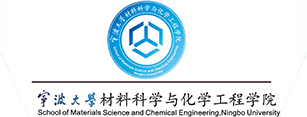报告时间:2013年12月23日(星期一)13:20-14:00
报告地点:龙赛理科楼南楼202报告厅
报告人:陈虹宇博士
报告人简介:
陈虹宇,男,现任南洋理工大学化学与生物化学系的副教授及理学院副院长(Assoc Dean, College of Science)。自2006年10月起在南洋理工大学工作,主要从事纳米结构的合成及机理研究。独立工作后自今发表通讯作者文章43篇,其中28篇IF > 10。
报告摘要:
Abstract: In this talk, I will start by briefly introducing the main research directions in my laboratory. Then, I will discuss our works on active nanostructures. The first system is to exploit the contraction of polymer shells for coiling embedded nano-filaments. Ultrathin AuNWs (d = 1.8 nm) were first encapsulated by PSPAA shells in DMF/water mixture. After addition of water to cause deswelling, the initially spread-out polymer domains contracted into spheres, forcing the embedded AuNWs to coil into rings. Interestingly, the coiled AuNWs stored mechanical energy in the form of elastic potential energy. Thus, they can spontaneously spring back after the polymer shells were removed. This method is extended to a general methodology for coiling carbon nanotubes and several other nanofilaments. In the second system, we start from a special type of Au-Ag alloy NWs with a unique twisted structure, namely Boerdijk-Coxeter-Bernal (BCB) helix. Upon the growth of an additional metal layer (Pd, Au, or Pt), each NW wound around itself to form a double helix. The product was a mixture of left- and right-handed helices, but within an individual helix the chirality was highly consistent. We proposed that this consistency originated from the highly ordered chiral lattice of the initial Au-Ag alloy NWs. Upon metal deposition, the lattice strain in the NWs increased to a critical level, so that they “want” to convert back from the BCB helix to the conventional fcc structure. This forced the entire wire to untwist, giving a double helix.
欢迎广大师生踊跃参加!

